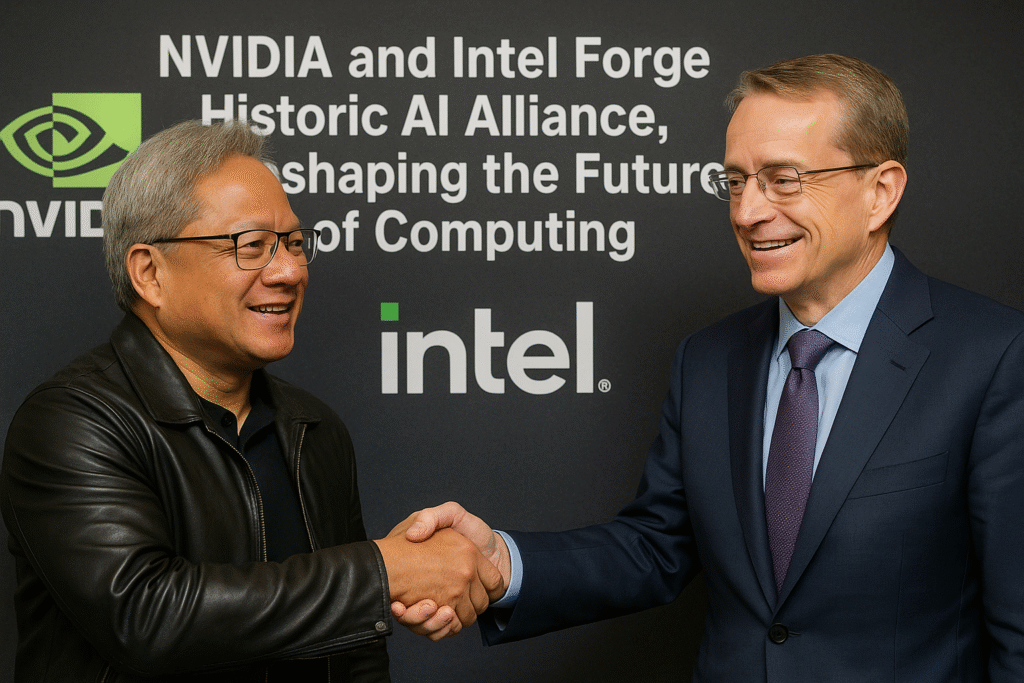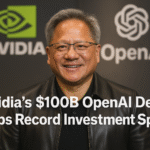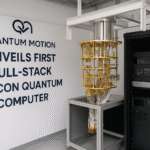By Harshit | 29 September 2025 | San Francisco | 9:10 AM EDT
The technology landscape is no stranger to strategic alliances, but few carry the potential to redefine an entire industry as profoundly as the newly announced collaboration between Nvidia and Intel.
This historic partnership, focused on AI-powered consumer PCs and cloud infrastructure, could accelerate the dawn of a truly intelligent computing era, while challenging competitors across the semiconductor market.
Echoes of the Past: Gates and Apple
Industry veterans are drawing parallels between this moment and Microsoft co-founder Bill Gates’ $150 million investment in Apple in 1997. At the time, the deal was not only financial support but also symbolic of cooperation amid rivalry, as Microsoft pledged to keep developing Office for Mac. The move stabilized Apple and helped preserve diversity in the PC ecosystem.
The Nvidia-Intel collaboration, however, is fundamentally different. Unlike Gates’ rescue of a struggling rival, this alliance brings together two industry giants, each dominant in its field, with the intent of conquering the next frontier of computing: artificial intelligence.
A Symbiotic Union
The strengths of the two companies align almost seamlessly.
- Intel brings decades of leadership in CPUs, x86 architecture, and large-scale semiconductor manufacturing.
- Nvidia, renowned for its GPUs, has pioneered the use of parallel computing for AI workloads through its CUDA platform and ecosystem.
Together, they promise to power a new generation of AI PCs. Such devices could seamlessly integrate Intel CPUs for general-purpose tasks with Nvidia GPUs for AI acceleration, unlocking:
- Hyper-personalized user experiences
- Real-time productivity tools such as instant translation and intelligent content creation
- Next-generation gaming powered by AI-generated worlds and hyper-realistic graphics
- Enhanced on-device security with proactive, AI-driven threat detection
By reducing reliance on cloud connectivity, this hybrid architecture could push intelligence closer to the edge — faster, more private, and more capable.
Beyond the PC: Cloud and AI Infrastructure
The partnership extends into cloud computing, where Intel will build custom x86 CPUs optimized for Nvidia’s AI platforms. When combined with Nvidia’s flagship GPUs like the A100 and H100, these systems will deliver unmatched performance for training and deploying large-scale AI models.
This collaboration could further entrench Nvidia as the leader in AI infrastructure while allowing Intel to secure relevance in a market it has historically struggled to dominate.
Competitive Shockwaves
The Nvidia-Intel alliance is already sending ripples through the industry.
- AMD, a growing force in both CPUs and GPUs, now faces a powerful competitor with unmatched integration and reach. To compete, AMD may need to double down on AI-specific hardware or niche markets.
- Chinese chipmakers such as Huawei, advancing with their Ascend processors, may find the innovation gap widening as the Western semiconductor market accelerates under this partnership. These companies will likely need to pursue aggressive R&D and new alliances to keep pace.
The AI desktop market, in particular, is set for rapid acceleration, forcing software vendors and peripheral makers to either integrate with the Nvidia-Intel ecosystem or carve alternative paths.
Automotive and Robotics Implications
The impact will extend beyond PCs and servers.
- Automotive: Nvidia’s Drive platform and Intel’s automotive-grade CPUs could combine to power autonomous driving systems, offering a formidable hardware foundation for the next generation of transportation.
- Robotics: Pairing Intel’s CPUs with Nvidia’s Jetson AI platform could transform robotics, enabling more capable machines for manufacturing, logistics, and consumer applications.
The Road Ahead
Rather than a rescue mission, this is a calculated alliance of two powerhouses. By combining Intel’s production scale and CPU dominance with Nvidia’s AI leadership, the partnership aims to redefine computing itself.
Much like the Gates-Apple deal reshaped the industry nearly three decades ago, the Nvidia-Intel alliance could mark a turning point — not one of survival, but of acceleration into the age of intelligent machines.







